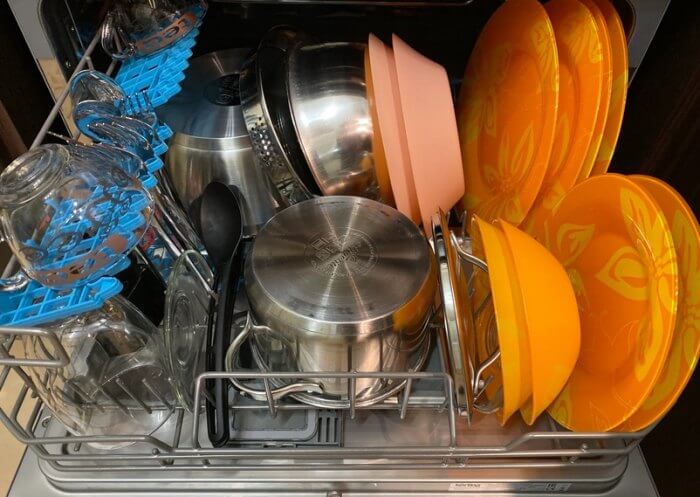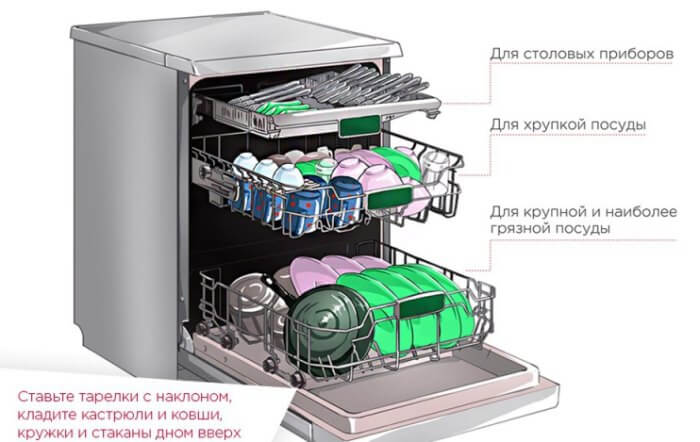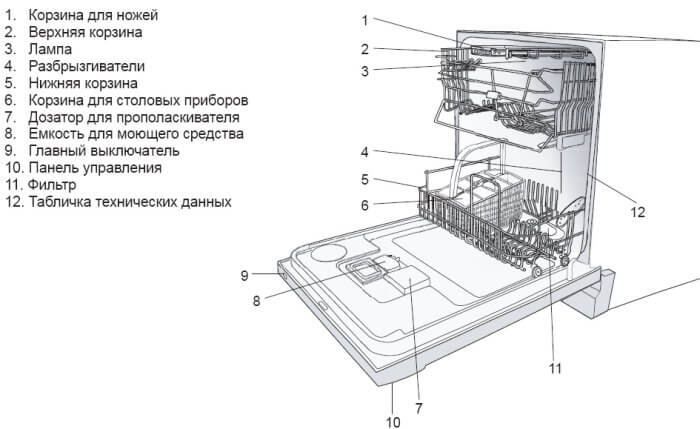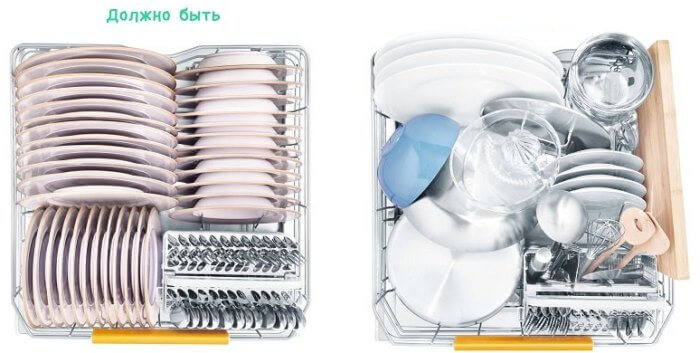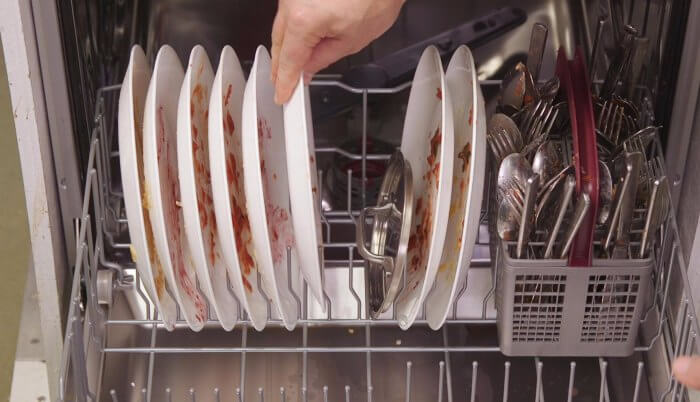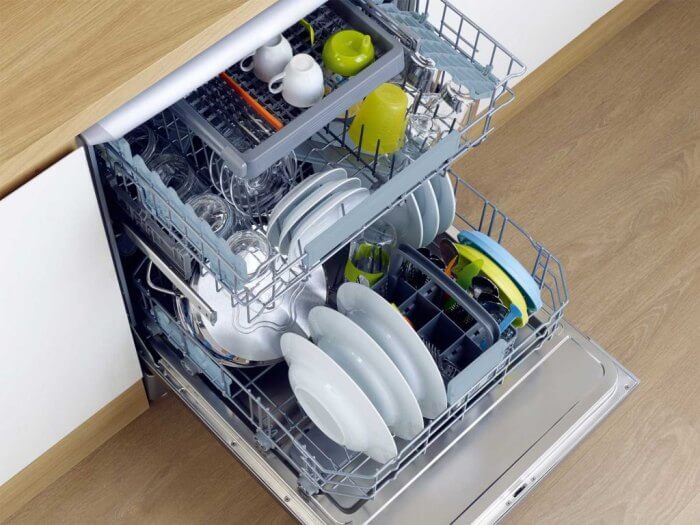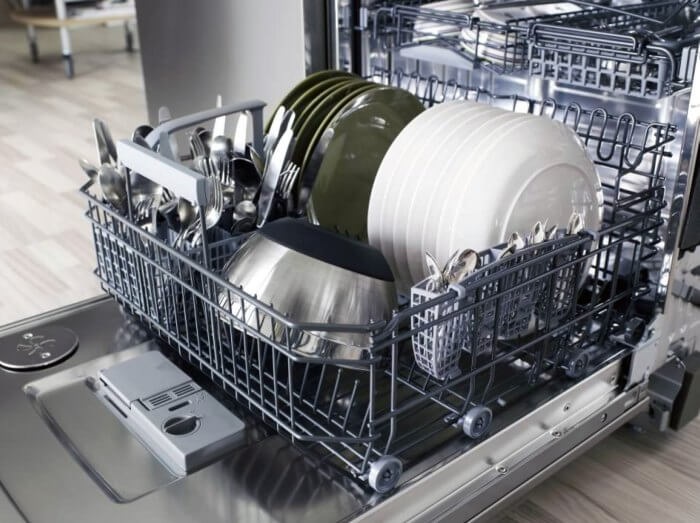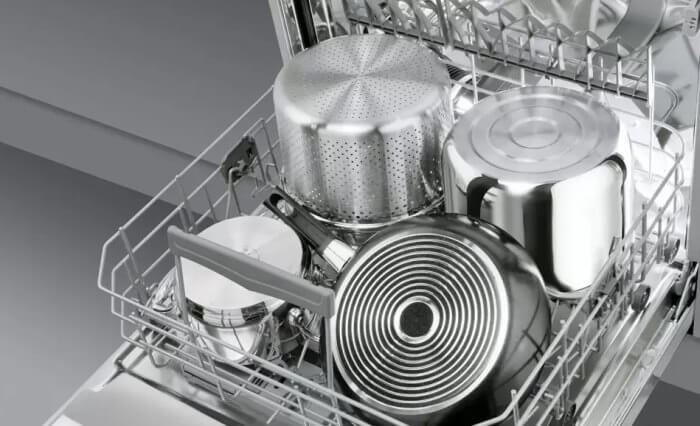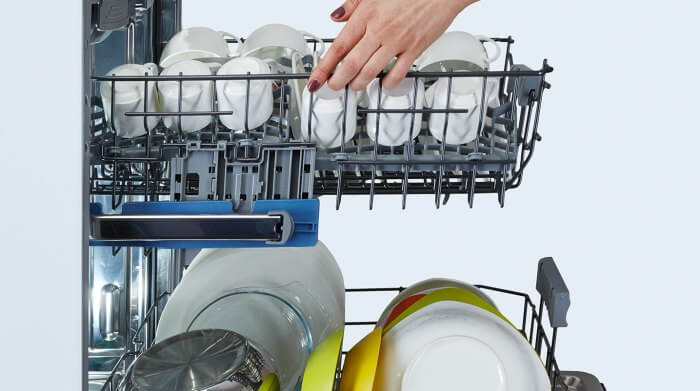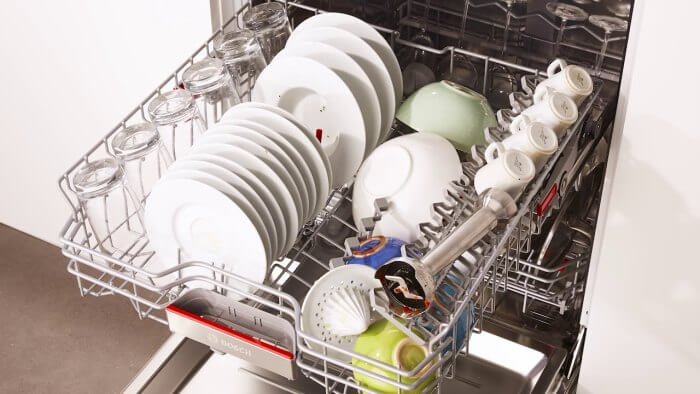Using a dishwasher is a solution to the problem of dirty dishes, which more and more people are resorting to today. A few years ago, only a few members of the middle class had them. Today, people everywhere install small and large dishwashers in their homes and apartments. Technology has made the operation of such machines economical not only in terms of time, but also in cases where the process involves the amount of water, detergent, and so on.
If the dishwashers were loaded correctly, then this makes much more sense. So today we will tell you: how to properly load dishes into the dishwasher, and also give advice on the types of cutlery, their materials and quantity.
Wash preparation procedure
There is preparation in washing dishes and in the process of turning dirty kitchen utensils into clean ones. Here it is very important to find the correct answer to the question of how to load dishes in the dishwasher.
Conventionally, this stage can be divided into several internal steps:
- All dirty kitchen utensils are distributed in trays that are built into the unit. As a rule, they are made of stainless steel and have the form of a basket.How to properly put dishes in the dishwasher, we tell below;
- Compartments that are designed for detergent are filled with a special gel. Today they also get a set with special capsules. They demonstrate results no worse than the classic version;
- On the control panel (it is located on the front side or on the top), the washing mode and water temperature are selected. The newer the machine, the more functions it will perform.
There is one important point that cannot be ignored before putting the dishes in the dishwasher. It consists in the following: if you do not immediately wash the cutlery, and they lie in the sink or elsewhere for some time, then soak them in cold or warm water.
This will greatly facilitate the work of the dishwasher, and the results will delight your eyes with shiny dishes.
How many dishes can be loaded
It all depends on two factors: firstly, how you will put the dishes in the dishwasher (it is important that there are at least small gaps between the objects where water could penetrate under pressure); secondly, the dimensions of your device have a great influence. Accordingly, the larger the unit itself, the more utensils it will fit.
We advise you to make preliminary calculations. They refer to the amount of utensils you soil on average per meal and cooking.
General layout rules
Before you properly load the dishes in the dishwasher, it is important to know a few simple rules for its layout. However, it is the observance of the points that we describe below that will provide you with the most visible result.
General rules cleanliness look like this:
- Do not overload the machine. In the event that you have accumulated too many dirty appliances, it is better to divide the washing process into several different runs. Be sure to leave a gap between all appliances so that enough water can enter there. Another important factor is that cutlery does not interfere with the sprinklers. This is how purity can be achieved.
- Check fixture fixing. Since strong water pressures are involved in the washing process inside the appliance, all dishes must be fixed as best as possible. It should not twist or roll over.
- Remove leftover food from cutlery. So you will not only ensure a more productive result of the device, but also make it much safer. The fact is that fruit seeds, tea leaves and other small waste perfectly clog the drain system.Who wants to struggle with cleaning it?
- Take care in fragile dishes. Treat fragile items with special care. Before loading the dishwasher, leave gaps between all wine glasses, glasses, and so on. Otherwise, vibration may cause chipping or other unwanted damage.
Often people are faced with a situation where they do not know how to properly load the dishwasher if they do not have enough cutlery. Saving dirty appliances is not an option. Pay attention to the panel of modes and indicators of your device.
If you have one of the modern dishwasher models, then here you will find the half-load function of the machine. This saves you the amount of detergent, water and electricity. Do not forget to follow the rules that we have indicated above.
Loading different parts
The question of how to load dishes into the dishwasher affects two points:
- Distribution of all cutlery on trays (depending on their height);
- Features of each type of dishes separately.
How to distribute items to trays
The first point concerns two floors in the dishwasher (there are exactly so many of them in classic household appliances).
Separation of dishes in the upper and lower trays should be carried out on the basis of the following principles:
- Top Tray. The most fragile items of dishes should be folded here. These include glasses, wine glasses, saucers, glasses and so on. If you do not have special mounts for glasses to keep them from chipping, you can purchase them. So you protect yourself from unnecessary costs and keep the dishes safe and sound.
- bottom tray. Less whimsical accessories can be folded here. For example, large plates, cutting boards, and so on. Be sure to make sure that everything is fixed as tightly as possible (do not forget about the gaps between the elements).
- cutlery container. This container comes with the machine. It has several sections that are designed for different cutlery (knives, forks, etc.). Don't hit them too hard.A small amount of free space must be present.
Types of dishes
Now let's pay attention to how to put different types of dishes. Regarding accessory variations, with the most information, there is such a list with tips and instructions:
- Forks, knives and spoons. There is a special tray (container) for them. We advise you to place knives with the handle up and forks and spoons the other way around.It is also not necessary to load the same devices into each section. It's even better if they are mixed up;
- Plates and saucers. Place large plates at the bottom, place saucers and deep plates on top so that they do not get damaged. Be sure to turn items upside down. Another tip: the larger the plate, the closer to the wall it should be placed;
- Glasses, wine glasses, glasses and glasses. We place them only on top. Be sure to do it upside down.
- Pans and pots. For them there is a lower tray. If the handles are removable, then remove them and put them side by side.
- The rest of the devices. We put them in the lower part of the installation. Spatulas and brushes can be fixed in the container for knives, spoons and forks.
Keep your kitchen clean.

